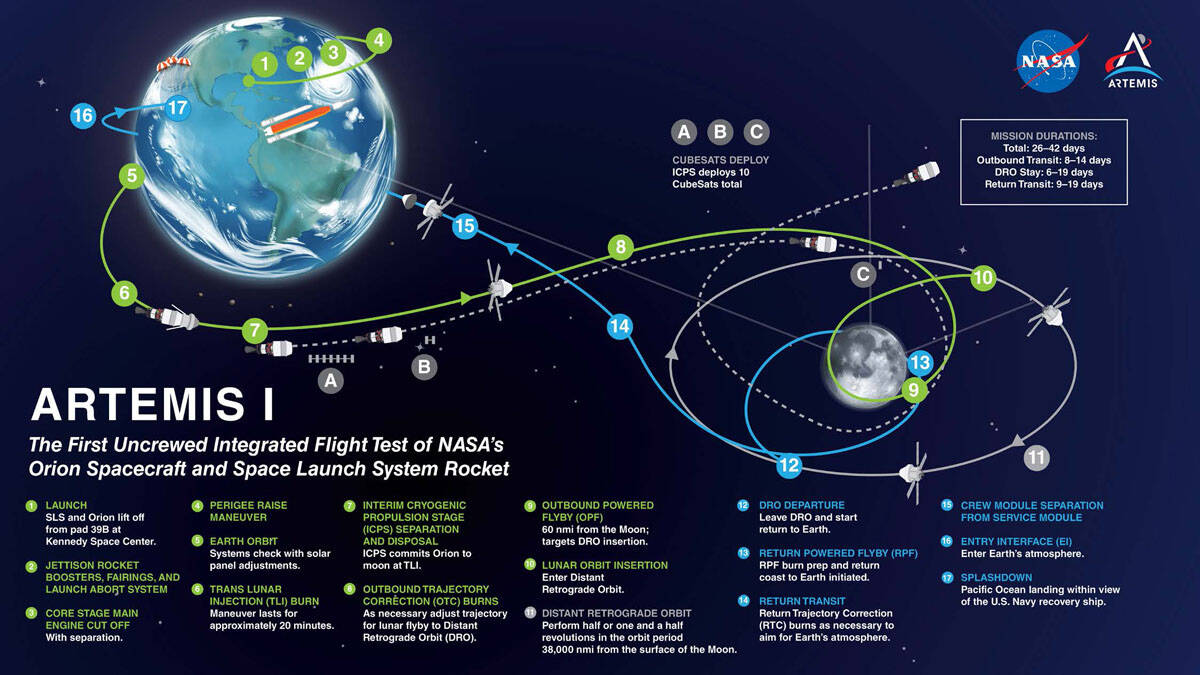A University of British Columbia researcher is sending samples of yeast and algae into deep space onboard a NASA spacecraft, in hopes of identifying the genes that allow organisms to survive there.
Corey Nislow is an expert in gene mutations, pharmaceuticals and has sent yeast to space before when partnering with University of Colorado colleagues and NASA. In a series of studies that began 11 years ago, he sent yeast to the international space station to study the effects of space radiation and near-zero gravity on organic cells.
Now, the yeast and algae are set to board NASA’s Orion spacecraft in the first of three Artemis missions, intended to result in a base orbiting the moon. The 98-meter spaceship was supposed to launch Monday (Aug. 29), but a fuel leak and engine troubles have delayed it until at least Friday.
READ ALSO: Engine problem leads NASA to scrub launch of new moon rocket
When Orion does launch, it will travel 64,000 kilometres past the moon — 48,000 kilometres further than the distance travelled by Apollo 13 during 1970 – with Nislow’s yeast and algae samples safely tucked away in the crew compartment.
Researchers will send more than 6,000 yeast mutations to space and Nislow will be able to study his samples after the Artemis I mission is complete, according to UBC. During the 42-day orbit, the algae and yeast will grow for up to seven generations.
The genetics of yeast cells are similar to human cells, meaning Nislow’s investigation into how the yeast samples are affected by being in space will support research into better treatments for deep-space explorers and cancer patients taking chemotherapy, Nislow said in a statement.
For the algae, the research team has chosen to study single-celled chlamydomonas reinhardtii because it will model how plants are affected by space while doubling as a source of food, oxygen and even hydrogen for fuel, Nislow said.
Initial research suggests space radiation makes changes to yeast’s genome sequences – the genetic instructions within a cell – appears similar to the ways DNA-damaging cancer drugs affect human cells. Nislow hopes the yeast investigation will help him find out more about this apparent similarity.
The returned samples could provide direction for developing better ways to combat radiation damage in yeast and humans exposed through space or chemotherapy. Being part of such a historic project is an incredible opportunity, Nislow said in his statement.
“For the first time in 50 years, biological materials will leave lower Earth orbit, contend with being exposed to cosmic radiation and then be returned to our laboratory for detailed molecular analysis.”
Artemis I is like a dress rehearsal for future deep space exploration, ideally setting the stage for historic developments by showing the launch system works and the Orion spacecraft can return to earth safely. NASA’s goal is to make a base camp on the moon’s south pole that will allow humans to live on the moon for up to two months.
The second Artemis mission will have a crew on it, but will not yet land on the moon, according to NASA. Through the third Artemis mission, NASA plans to land the first woman and person of colour on the surface of the moon and make lunar exploration a key feature of the next few years.
In addition to the space biology investigations Nislow is a part of, mannequins and small boxes with technologies will be on board. The Lunar IceCube box from Morehead State University, for instance, will contain an infrared spectrometer to search for water in all forms.
In a statement Monday, NASA said it’s hoping to launch Artemis I on Friday, but that it could now be delayed into September.
READ ALSO: Artemis space mission to moon ‘a stepping-stone’ to Mars and beyond

